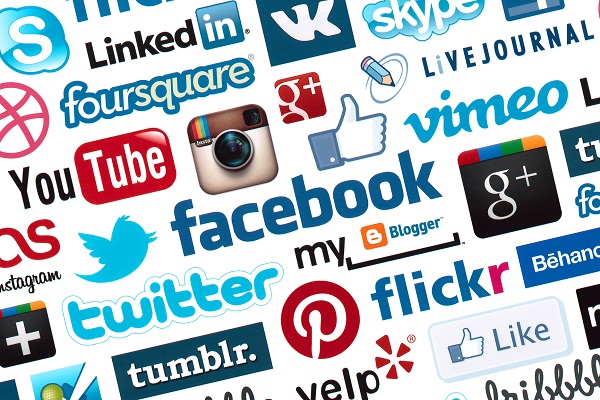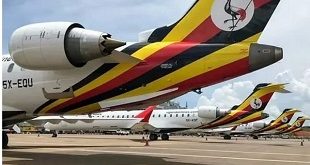
COMMENT: By Bob Kasango
The traditional court system must examine itself over the rise of courts of public opinion
Each week in Uganda is eventful and a new word or phrase takes centre stage. Weeks back it was “bailout”, last week it was “cows and goats”, this week ended with “mobs and Kayihura” as a rowdy gang of goons besieged Makindye Magistrates’ Court in an attempt to block the prosecution of suspects – who were not present at court!
The “cases” of bailout, cows and goats, and hired mobs are seeking judgment in the court of public opinion. Now the court of public opinion has a full docket; even brick-and-mortar establishments, like Makindye Court room, aren’t immune to its decisions.
The incident at Makindye has attracted the opinions of the high and the low. Thousands took to Twitter and the internet to argue the “facts” — and their grievances. The Chief Justice has weighed in rather sternly and strongly. He said, “something is fundamentally wrong and we must address it as a country”. Yes Mr. Chief Justice we must.
For the first time in our independent history, the Courts were openly challenged and defied by the public. This is a dangerous precedent and the real crisis that the judiciary faces for which they will need deep introspection.
In the days leading to the fracas at Makindye, the Inspector General of Police, Gen. Kale Kayihura, had been the subject of unusual negative publicity in the media. Even the largely state-owned New Vision newspaper gave him front-page negative coverage. He complained of the “bad press”. Now, without any evidence, the same media has “convicted” Gen. Kayihura of having hired the mobs!
If indeed he retreated to counter the attacks in the manner he is alleged to have, he is just one of more and more individuals — and companies — that are augmenting, even bypassing entirely, traditional legal processes hoping to get a more favourable hearing in public.
Public opinion versus the law
In our everyday life, we interact with lots of strangers; from people we pass on the streets to people who serve us in markets to people we enter business relationships with. In all these interactions, even though most of us don’t have the ability to protect our interests with physical force, we can all be confident when dealing with these strangers because we trust – at least in part — that the legal system will intervene on our behalf in case of a problem.
Sometimes that problem involves people who break the rules of society, and the criminal courts deal with them; when the problem is a disagreement between two parties, the civil courts will. Courts are an ancient system of justice, and modern society cannot function without them.
What matter in this system are the facts and the laws. Courts are intended to be impartial and fair in doling out their justice, and societies flourish based on the extent to which we approach this ideal. When courts are unfair — when judges can be bribed, when the powerful are treated better, when more expensive lawyers produce more favourable outcomes — society is harmed. We become fearful, less trusting, more defensive, and less willing to enter into agreements with strangers because we don’t trust the system has our back.
The court of public opinion is an alternative system of justice but it’s very different from the traditional court system. It is based not on facts and laws, but on reputation, revenge, public shaming, humiliation and the whims of the crowd.
Having a favourable story in the media is more important in this court than having the law on your side. Being sympathetic to a “public cause” is more important than being fair. Facts matter in this court, but there are no standards of accuracy.
The speed of the Internet exacerbates this; a spicy story spreads faster than a bunch of dull hard facts. I once read a Prosecutor’s internal Memo to the DPP in which the Prosecutor advised thus: “…we do not have evidence to secure a conviction but in the interest of fighting corruption, let us charge them just to embarrass them”. This was in a case involving Ministry of Health officials in an alleged botched procurement of anti-HIV drugs. They were in effect taking the suspects to the Court of public opinion but parading them in a Court of law.
The court of public opinion delivers reputational justice. Arguments are measured in relation to reputation. If one party makes a claim against another that seems plausible, based on both of their reputations, then that claim is likely to be received favourably. If someone makes a claim that clashes with the reputations of the parties, then it’s likely to be disbelieved. Reputation is, of course, a commodity, and loss of reputation is the penalty this court imposes. In that respect, it less often recompenses the injured party and more often exacts revenge or retribution. Those losses can be brutal and have long-lasting personal effects.
The court of public opinion has significant limitations. It works better for revenge and humiliation than for justice and dispute resolution.
In many ways, this is a return to a medieval notion of “fama,” or reputation. In other ways, it’s like mob justice: sometimes benign and beneficial, sometimes terrible. Trial by public opinion isn’t new. The news is that lately the courts have been dragged into it as well. Judges quite now make decisions to appeal to public mood and sentiment.
Public opinion very often finds itself in court judgments – often in a subtle but sometimes very obvious manner by the rulings of judges being influenced by “public feelings”. The courts too are guilty of emboldening the mobs. The Courts have acted as agents of what are now called mobs and when the actions of the Courts are at variance with the desires of the mobs, the mobs directly challenge the Courts for judicial authority as we witnessed.

Role of media
Mass media has enabled this system for many years now but the Internet and social media in particular, have changed how it’s being used.
Now it’s being used more deliberately, more often, and by more and more powerful entities as a redress mechanism. Perhaps it’s perceived as more efficient or because some parties feel they can get a more favorable hearing in this new court. It is overshadowing lawsuits. Instead of being a sideshow to actual legal proceedings, trial by public opinion is turning into an alternative system of dispute resolution and justice.
Part of this trend is because the Internet and mainstream media make taking a case in front of the court of public opinion so much easier and effective. It used to be that the injured party had to convince a traditional media outlet to make his case public; now he can take his case directly to the people. And while it’s still a surprise when some cases go viral while others languish in obscurity, it’s simply more effective to present your case on Facebook or Twitter. And because the mainstream media dread the prospect of being left out and left behind, they have caught on with online versions of their publications and repeat versions of a story in the hard copies. Because they must play catch-up, they often don’t investigate at all or enough and don’t care that the many times distorted information they publish are irreversibly damaging to an individual or not.
The public must trust the press as a source of accurate information. So it is particularly egregious when media accounts of events are based on faulty or inadequate research.
The worst-case scenarios of media misinformation result when reports, especially of matters before Courts of law, actually malign the character of individuals and, thereby, foster public prejudice: adverse opinions or leanings directed against individuals or their supposed characteristics without due knowledge or examination.
The press then becomes responsible for these unjustified, unfavorable opinions of others that result in the public and sometimes the Courts adopting irrational stances of hostility toward lambasted individuals. The most sinister aspect of this type of reporting is that it becomes next to impossible to counter the media’s erroneous statements because people; including judges, tend to believe the “facts” the media reports.
The maligned individuals are, therefore, at a disadvantage both in the Courts of law and in the Court of public opinion. To counter this disadvantage, those that can afford it hire mobs.
 The Independent Uganda: You get the Truth we Pay the Price
The Independent Uganda: You get the Truth we Pay the Price



